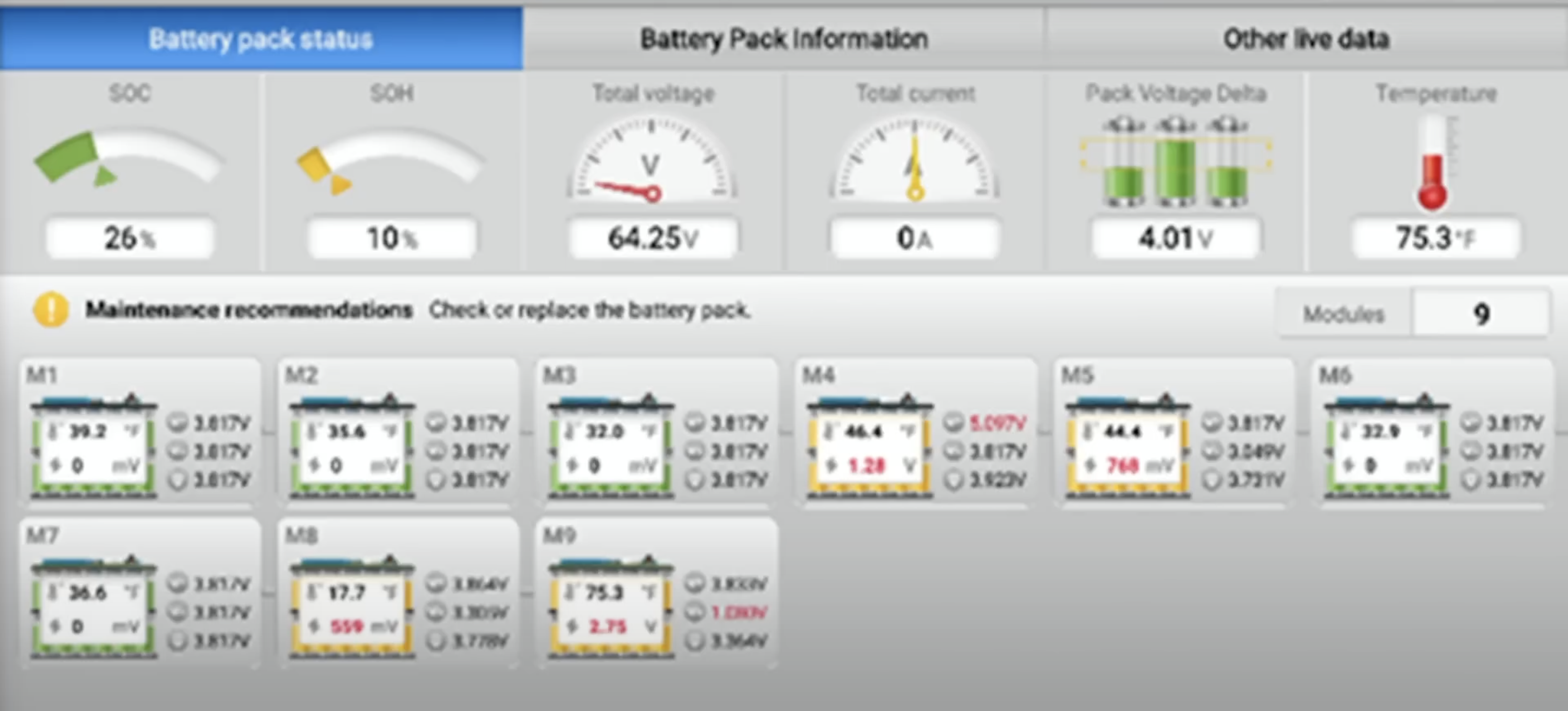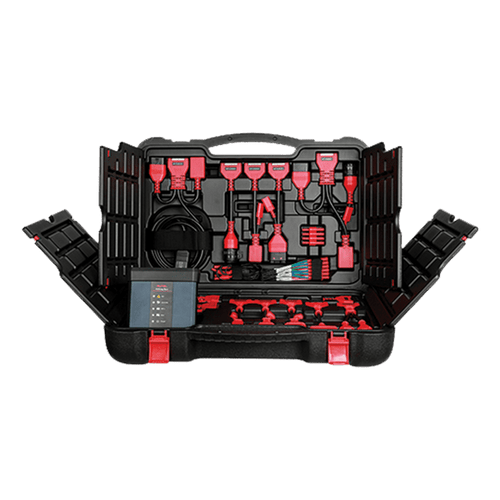A brief precaution: one metal tool touching the wrong component can lead to fatal electrocution. It's really, really important that you have the right tools and training! Unlike the 12V batteries in traditional ICE vehicles, EV batteries can range from 200-800 volts. This blog post aims to detail the diagnostics portion of EV repair, and if you haven't read already, take a look at our blog post that goes over safety equipment and PPE for EV repair.
Let's discuss the tools that will allow you to perform EV diagnostics. It's an important topic for your shop, because vehicles that were brand new 8 years ago will have started to come out of warranty. Furthermore, it's estimated that more than a third of all vehicles sold in California will be electric by 2026. The best time to dive in is now.
Connector Package
In order to get started, and assuming you have scan tool already, the first step is to get an add-on kit: Autel Launch.


This will allow you to connect directly to the battery management system via connectors of different OEMs. It connects to the data bus lines of communication to show information such as individual cell voltages, battery temperature, state of charge, state of health, etc. The state of health is particularly useful in telling the range of a battery - anything below 80%, and the customer can expect a decrease in battery performance.

Screenshot from Autel system
Battery Lift (coming soon)

EV batteries are typically mounted on the underside of the vehicle, spanning a large portion of the chassis. Accessing the battery for inspection, maintenance, or replacement often requires lifting the vehicle off the ground. EV batteries are very heavy and can weigh several hundreds of kilograms. A battery lift allows you to lower the battery from the vehicle safely and precisely.
Battery Maintainer
While we do carry battery maintainers such as the TOPDON Tornado line, these aren't meant for EV batteries. You'll need something beefier, such as the Launch ELA320. An EV battery maintainer such as this one, however, does work for both EV and traditional ICE vehicles - it sports both high-voltage and low-voltage outputs. At high-voltage, it can do 250V-750V at 0-5A. This maintainer is designed with safety in mind, with the ability to protect you against reverse polarity, overcurrent, over-temperature, or over-voltage and under-voltage.
Battery Equalizer
When cells are inconsistent in terms of voltage, this can lead to degradation in performance and shorter vehicle range. A battery equalizer from Launch equalizes cells by transferring energy from higher-voltage cells to lower-voltage cells until all cells have the same voltage. By keeping all cells charged to the same level, the battery's overall performance and life are maximized. Equalizers reduce the risk of overcharging or undercharging individual cells, which can be dangerous and reduce battery efficiency.
Conclusion
The easiest way to dip your feet into EV diagnostics and repair is to purchase a connector package that will allow you to communicate with the battery management systems. Beyond that, there are a range of tools that will allow you to understand and improve the performance of cells, all with safety as a priority. Let us know if you have any other perspectives on EV battery service, as this is such a new field.



